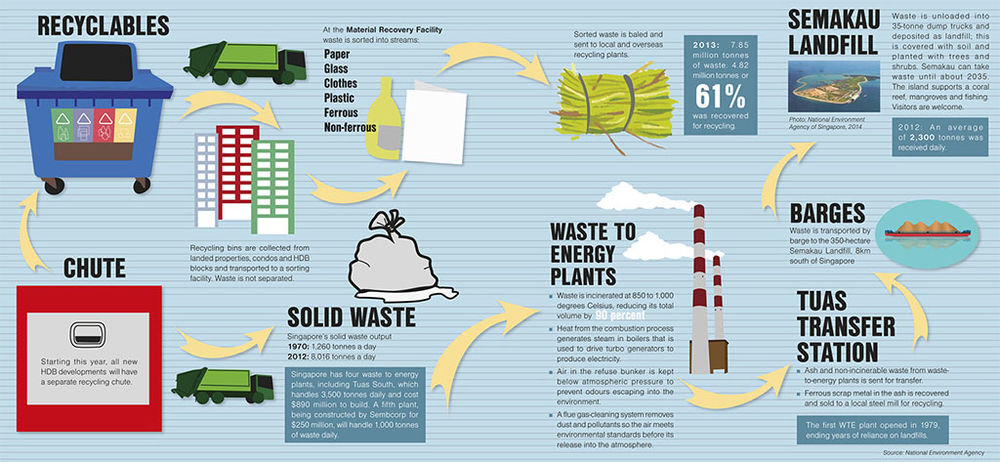Ever wondered how trash is disposed of in Singapore? Moving into a condo in Singapore often comes with a pleasant surprise: the rubbish chute! This little door makes getting rid of trash so much easier. Instead of dragging a big green bin to the street every week (especially late at night in your pyjamas), you just drop your garbage down the chute. It’s all part of Singapore’s smart approach to handling waste. If you’re curious about how the city stays so clean, you might want to look into waste management companies in Singapore. They play a big role in making sure everything runs smoothly.
But where does all the rubbish go after it vanishes down the chute? And what about the items you put in the recycling bin? Recycling in Singapore has a comprehensive recycling program, aiming to enhance sustainability and reduce waste through its extensive network of recycling bins and facilities. Here’s a simple guide to what happens next.
Solid Waste Management in Singapore
Singapore has seen a significant increase in solid waste due to its growing population and economy. From 1,260 tonnes of waste per day in 1970, the figure rose to 8,741 in 2021. To manage this, Singapore doesn’t just collect waste; it turns it into energy at waste-to-energy plants. This process reduces the waste volume by about 90%, and the remaining ash is used to generate electricity.
The remaining ash and other non-burnable waste are transported to the Tuas Marine Transfer Station (TMTS). They’re loaded onto barges and taken to Semakau Landfill, about 30km away.
Waste-to-Energy Plants
Singapore has four main waste-to-energy plants:
- TuasOne
- Keppel Seghers Tuas
- Tuas South Incineration Plant
- Senoko Waste-to-Energy Plant
These facilities help reduce the volume of waste and extend the life of Semakau Landfill, which is crucial for a land-scarce country like Singapore.
Semakau Landfill
Opened on April 1, 1999, Semakau Landfill is the only landfill in Singapore, covering 350 hectares. As one of the key initiatives by waste management companies in Singapore, it’s expected to meet Singapore’s waste disposal needs well beyond 2035. The landfill is functional and environmentally conscious, with efforts made to protect nearby coral reefs and mangroves during its construction.
Looking Ahead: Integrated Waste Management Facility (IWMF)
The National Environment Agency (NEA) plans an Integrated Waste Management Facility (IWMF) to address future waste management challenges. This state-of-the-art facility will incorporate innovative technologies to maximise energy and resource recovery. It will share its site with the Tuas Water Reclamation Plant to enhance efficiency through synergies.
This system shows how Singapore manages to keep the city clean and sustainable, turning what could be mere rubbish into valuable energy and carefully managing the remnants.
For more detailed views of how trash is disposed of in Singapore’s landfill, here’s an infographic for a closer look.
Singapore’s approach to waste management is pretty impressive – a blend of innovation and sustainability. Through its network of waste-to-energy plants and the operation of Semakau Landfill, the city-state not only keeps its streets clean but also turns everyday rubbish into valuable energy.






